
3S is the abbreviation for “Seiwa Scholars Society,” which consists of the past and current Inamori Research Grant recipients. The 3S has evolved since 1997 with the hope that the interactions among the various specialties of the 3S members can lead to the further development of the research of their own. In the series “Visiting 3S Researchers,” we interview researchers in 3S who are very active in a variety of fields. The third interview is with Dr. Daisuke Akaishi (2019 Inamori Research Grant Recipient) from Kyoto University.
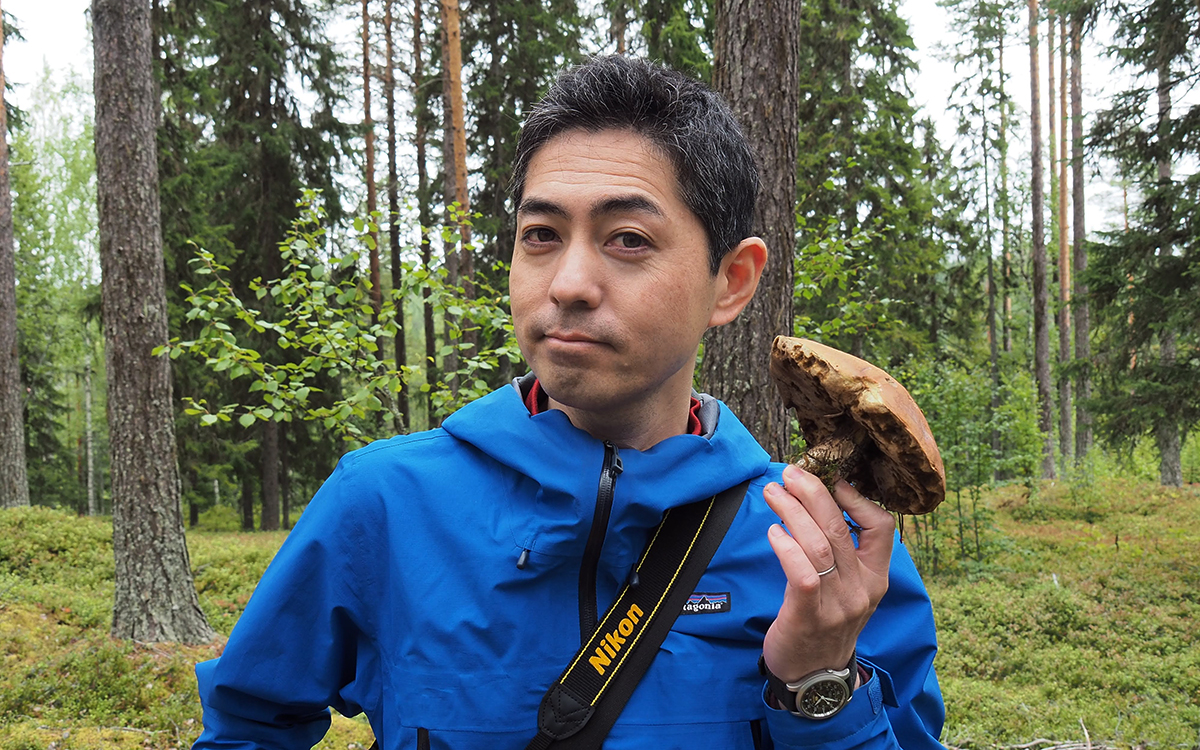
The Ashiu Forest Research Station of Kyoto University is a field research site in the northeastern part of Kyoto Prefecture. While considering new role and sustainability of the research station, Dr. Daisuke Akaishi, a program-specific assistant professor, realized that research carried out there needed to include not only the natural environment but also the livelihood of people in the whole surrounding basin formed by the rivers that originate in the forest. This idea developed into a new research approach where researchers and local residents work together. In this interview, Dr. Akaishi told us about the latest developments of the research his group has been pursuing step by step in cooperation with local communities, applying creative ideas. He also shared the current issues, challenges and the prospects for the future.
── First of all, could you please tell us about the latest developments at the Ashiu Forest Research Station?
Dr. Daisuke Akaishi (title omitted below) Dr. Takenoshin Nakai,*1 a well-known botanist, once said: “Ashiu Experimental Forest of Kyoto University is a must-visit destination for every botany student.” The reason for this lies in the rich biodiversity to be found in Ashiu Forest. The forest research station is located at the headwaters of the Yura River and is in a transition zone between warm-temperate forest and cool-temperate forest. Therefore, plants and animals associated with both climatic zones occur together, resulting in a high level of biodiversity. In recent years, however, deer overbrowsing has been causing forest degradation and biodiversity loss. How can we stop this critical threat? This was the first issue we became aware of.
── Please tell us about the study field of “Connectivity of Hills, Humans and Oceans.”
Akaishi The new study field of Connectivity of Hills, Humans and Oceans (CoHHO) was first proposed by Professor Masaru Tanaka of Kyoto University in 2003. A river runs out of the forest into the surrounding land and then flows on to the ocean. The series of linkages occurring along the way are all interrelated. Focusing on these linkages, we examine the values of the natural environment, the criteria to evaluate that values, and the social mechanisms to manage these values and criteria in order to achieve a sustainable society. We study how the virgin forest of Ashiu, the Yura River flowing from it, the people of Miyama Town in the river basin, and the Maizuru Bay are all linked, and whether there are breaks in any of these various linkages. We would like to use the idea of CoHHO to study the entire basin of the Yura River, so that the sustainability of the whole area can be improved.
── If the sustainability of the whole basin is your research subject, you must be working on a vast range of subjects as part of your studies.
Akaishi That’s right. However, measures taken based on knowledge of the natural sciences alone will not be enough to make society sustainable. As Professor Tanaka pointed out, the world will not change unless awareness of the issues is shared not only among researchers but also with the people living in the wider area of the local community. We researchers would like to provide information and talk with people so that they can think for themselves and put ideas into action. Based on this concept of CoHHO, we are engaged in various social cooperation projects.
── You value cooperation with the local communities. What exactly does that involve?
Akaishi We try to visit these places as much as possible and talk with the local people. Although it has been a little difficult recently due to the COVID-19 pandemic, we normally visit the sites several times a month and stay there for one or two nights. That’s been our basic research style. At each site, we organize study sessions in order to interact with local people. We also have meetings with the researchers who reside in the forest research station fulltime in order to carry out our studies.
── What are the backgrounds of the research members?
Akaishi We have a variety of researchers from a wide range of fields. I am a forest ecologist, but the team also includes experts in business administration, psychology and various other fields. We all work together as part of an interdisciplinary research group. For example, we study how to make effective use of the local resources for tourism – approaching this from a business administration perspective. From an ecological point of view, we also examine the sustainable use of local natural resources, such as wasabi and Japanese horse chestnuts, and their incorporation in souvenir products. We also ask psychologists for advice on building relationships with local residents. In cooperation with psychological researchers, we also conduct questionnaire surveys and interviews regarding actual conditions of the region.
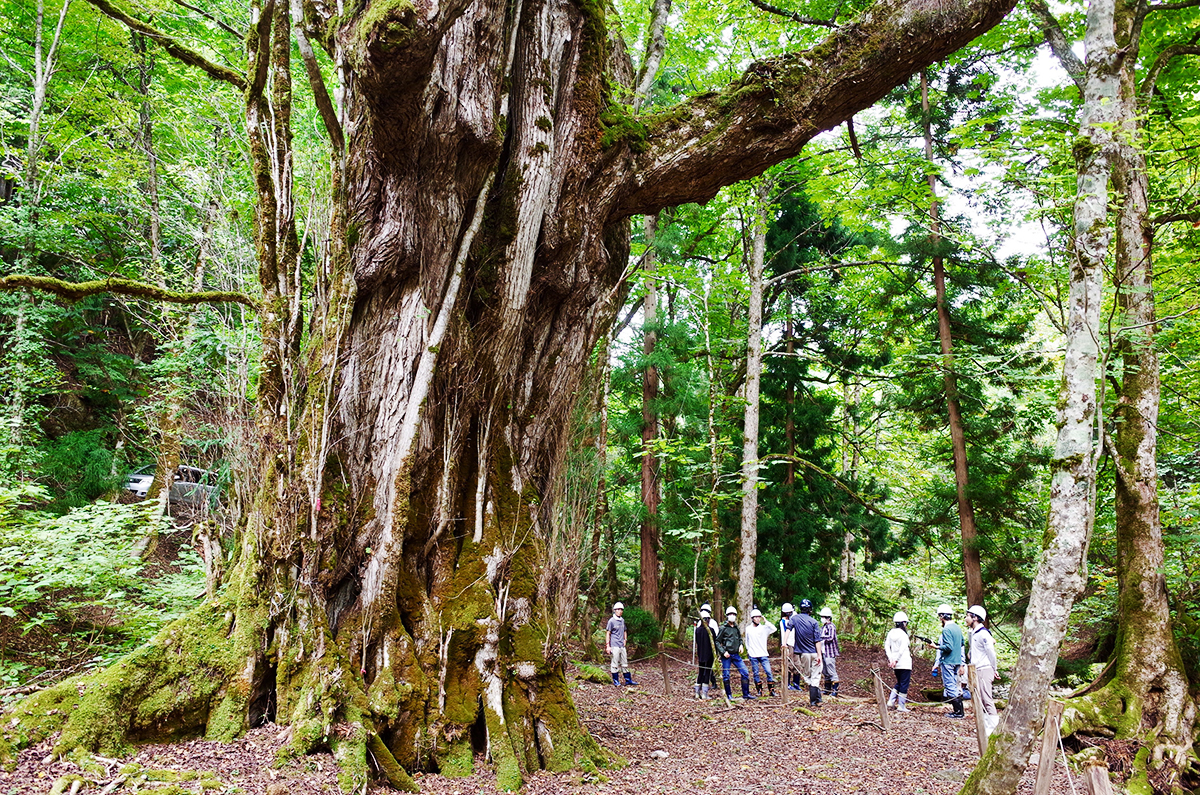
── You said that the relationship with the local community is important. How have the people of Miyama felt about the forest research station?
Akaishi To be honest, the relationship was deteriorating until a little while ago. Kyoto University had first rented the Ashiu Forest area in 1921, not only as a site for education and research but also as a working forest to help fund the university’s activities. At that time, they hired local people to plant trees, extract timber and make charcoal. However, in the latter half of the 1960s, these forestry activities started to become unprofitable and began to decline. When, in the 1990s, a plan to construct a dam became known, the university and the community collaborated in order to campaign against it. But after that, interactions with the local people gradually diminished, and the distance between the university and the local residents began to grow.
── The local residents must have many feelings and opinions about all this… .
Akaishi I’m sure they do. So, we started asking the local people about their thoughts and feelings regarding Ashiu and Miyama, trying to find any issues that could be solved together. Of course, that is not all. We also seek information that only researchers can provide and try to identify topics that people would find useful by making use of our expertise. As part of this process, we work with the guides of the Ashiu Moribito Kyokai.*2 Our cooperative work started in 2018 and we recently achieved an exciting result──the rediscovery of yellow stinkhorn fungi,*3 a mushroom in the stinkhorn family.
── Yellow stinkhorn fungi?
Akaishi In 2019, we were planning to study mushrooms at Ashiu Forest Research Station. Then we got to know that the local people who conduct guided tours in Ashiu wanted to learn more about the mushrooms that they often see in the forest. So, in July, we held a workshop for the guides in order to design more eco-friendly tours and increase the number of “eyes” (observations) of mushrooms reported in the forest research station. When we showed pictures of yellow stinkhorn fungi in the workshop and told those present that this was listed as an extinct species in Kyoto, one of the guides said “I have seen that mushroom in the forest research station.” This was a great shock. So, in June 2020, we conducted a field survey with the guide and identified the yellow stinkhorn fungi for the first time in 48 years in the Kyoto region. We then reported this finding in a scientific paper. We were deeply moved by the fact that it was our collaboration with local guides that led to this discovery and proved the richness of Ashiu Forest. At the same time, it provided us with a valuable hint regarding how best to design a new form of biodiversity monitoring involving cooperation between both local residents and researchers.
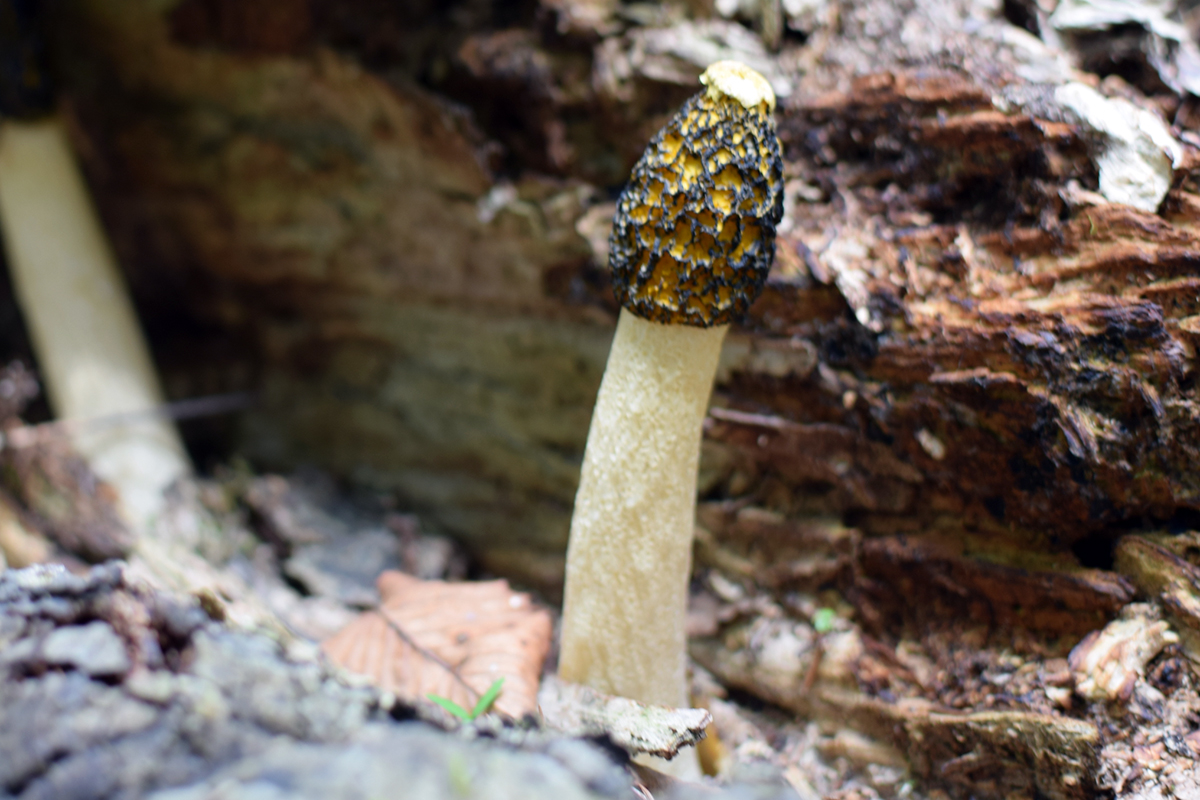
── Has the collaboration with local people been going smoothly since then?
Akaishi We are making steady progress, although it is challenging. Miyama has long been known as a tourist destination, so several groups had already started their activities there before we arrived. Compared to them, we were latecomers. It is only natural for the local people to ask “what can the university do now?” In addition, our research is not directly linked to making profits. At first, some people said, “Ashiu Forest is, after all, a university forest and has little to do with us.”
However, quite a few young people have moved to or have moved back to Miyama in recent years. There are many relatively young people, in their 30s and 40s, who find Miyama very attractive. When I approached some of these people who wanted to work on promoting the charm of Miyama, they showed keen interest and so we started working together.
── What did you find out in the discussions?
Akaishi The issues affecting the forest and the issues faced by the local people are closely linked to each other in terms of sustainability. We thought that solutions regarding the sustainability of the Ashiu Forest Research Station could be found by considering the sustainability of Miyama Town, too. Although Miyama is well known as Kayabuki no Sato (village with thatched houses), it is facing problems with depopulation and an aging population. In addition, due to the large-scale municipal mergers carried out mainly in the first decade of the 2000s, the former Miyama Town was merged into Nantan City. As a result, decision making now takes longer than when Miyama Town was an independent municipality.
Various actors and individuals in the region are all facing a variety of different issues. “Can’t we find a clue to the solutions by sharing information about these issues and finding some way we can help each other?” “Will it be possible that we researchers act as a bridge between various actors in the region and those outside the region?” Those were the questions uppermost in our minds.
── What kind of activities have you been undertaking to share the information about the issues?
Akaishi When it comes to the sustainability of the local community, the first priority is to maintain people’s livelihoods. To make effective use of natural resources and also ensure that such measures are economically viable, it is necessary to have business administration experts join us and, at the same time, have the local people tell us their honest opinions. That’s why we launched the Miyama x Researchers Link-Up Meeting as a place to facilitate such discussions and held the first meeting in February 2020. This is where we report research results to the local people and, at the same time, listen directly to the opinions of the local people regarding issues that Miyama is currently facing. In addition, we started a public lecture series, called the Learning Community for the Cities and Forests, with the intention of having as many people as possible in urban areas recognize the problems occurring in the more upstream areas. We invite people from urban areas, such as Osaka and Kyoto, to the Ashiu Forest Research Station and Miyama Town, and have them talk with people who are actually working at these sites. This style of learning in which local residents and researchers learn together is also well-known in the cases of Yakushima Island in Kagoshima Prefecture and Tsushima Island in Nagasaki Prefecture. Based on these precedents, we hope to develop a platform for regional communities and researchers, such as the “Miyama Society,” for example.
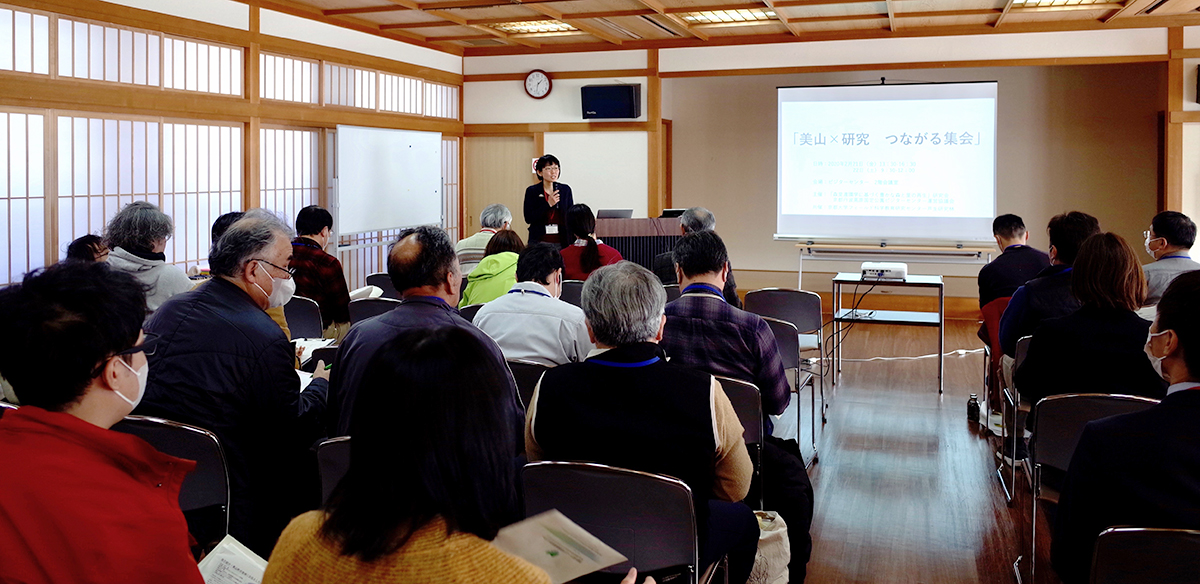
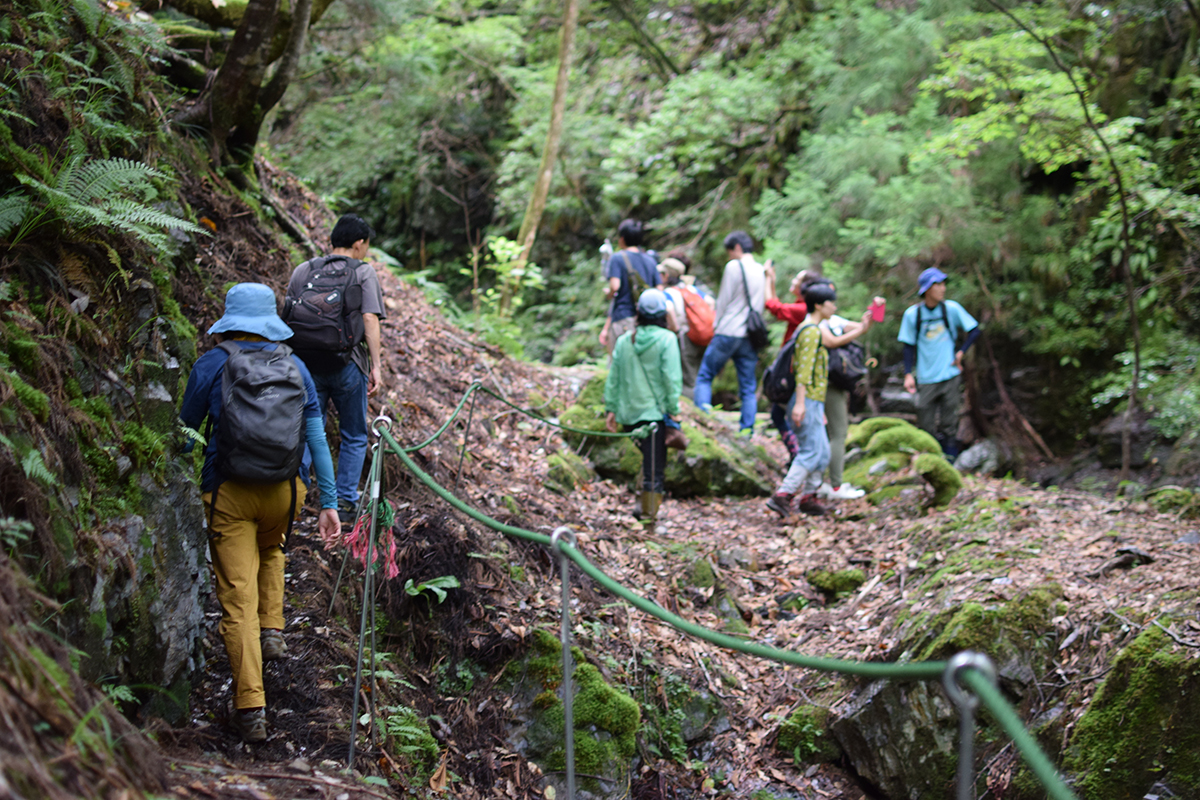
── Speaking of collaboration with local governments and local communities, you have also had various experiences in Noto in Ishikawa Prefecture.
Akaishi In the Satoyama Satoumi Project, which has been undertaken in Noto, we were able to integrate the conservation of the local natural environment and regional revitalization into one single movement through the cooperation of universities, local government and NPOs. Then, we incorporated it into the local government policies. Specifically, we were involved in the formulation of a conservation activity plan based on regional cooperation for Suzu City, Ishikawa Prefecture, and were able to draw up an action plan enabling the community to work together. In Miyama, too, people in their 30s and 40s have come together saying they want to start new activities. I, personally, would like to support them. In such cases, linking each local activity with a local government policy can be a good way to support local activities. I would now like to make use of the know-how I obtained in Noto for Miyama.
── In any case, long-term plans will be needed.
Akaishi In Noto, where I worked previously, it took seven or eight years for various activities to start producing visible results. So, I know that it will take time in Miyama, too. Still, thanks to the support we received from the local people, we were able to start providing opportunities for improved communication, such as the Link-Up Meeting, in the first year. This was a good step forward. Also, I was able to establish a place where I could move things forward while discussing various topics with the energetic young people in the area. This experience was very encouraging. The Ashiu Forest Research Station will continue to be managed by Kyoto University for several decades to come, so I would like to work on the plan from a long-term perspective. Regarding the process of research development and result generation, we are confronting the challenge of trying to establish a new style in Miyama. Let’s say the conventional style of returning research results to society is called Level 1, where the researchers conduct studies and report the results in a lecture meeting, etc. In recent years, a new style of citizen involvement using social media and other tools has been developed in which ideas are suggested by members of the public, or local data are collected from the local people──as seen in some meteorological studies, for example. We regard this style of involvement as Level 2.
── So, are you on Level 2 in Miyama?
Akaishi Actually, we are aiming for one step ahead, Level 3. The local residents and researchers are involved in projects right from the initial stage of setting the objectives and, thereafter, keep working on the research together. This is a new style of research where local people are involved at a deeper, more fundamental level than just Level 2. To make this work, we researchers have to let our thoughts be understood by the local people, while listening to the thoughts and opinions of the local people, so that the ideas shared by both sides can form a “pillar” of the project. I, myself, am working for Ashiu and Miyama in various aspects──not only conducting my own studies as a researcher. I believe these actions will also expand my personal boundaries.
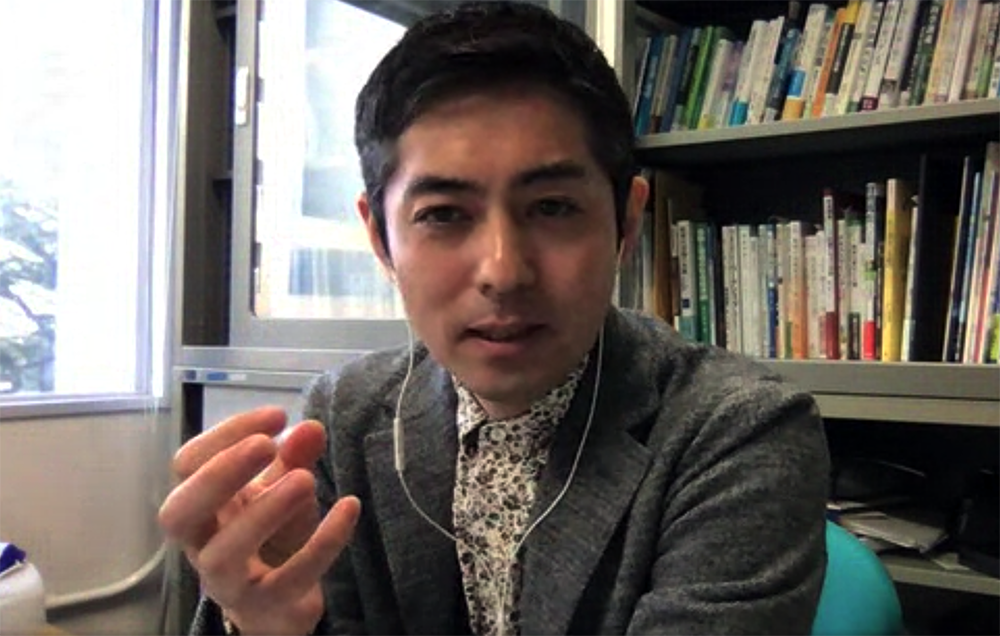
── What made you want to become a researcher in the first place?
Akaishi Ever since I was a child, I have longed to be a researcher. At Kanazawa University, I met Professor Koji Nakamura,*4 who led me to the world of ecology. He studied at Kyoto University and had been conducting research for many years at Ashiu. I believe that Professor Nakamura guided me to Ashiu. He also led me to Noto, and my experience in Noto has been put to good use in Miyama. I feel that there is something special about this coincidence.
── Please give us an overview of your future research plan and challenges.
Akaishi I am afraid that the Earth has now entered its sixth major extinction period, and that there are two major differences between this extinction event and similar events in the past. First, the cause of the current extinction event is human activities, and secondly, it is happening at a much faster rate than any previous catastrophic events. Moreover, this is expected to impose significant negative impacts on humans. We must stop this at all costs. What can we do to achieve that? The amount that any one person can do is very limited, of course, but we have to start with what we can do now. That is why we need the collaboration of a great number of people. I keep this in mind throughout my daily work.
── Thank you very much.
*1. A botanical taxonomist (Doctor of Science) who was active in the first half of the 20th century and served as a professor at the University of Tokyo (then Tokyo Imperial University), director of the Koishikawa Botanical Garden, director of the Bogor Botanical Gardens, and director of the National Museum of Nature and Science.
*2. A general incorporated association consisting of several local guided tour groups. Currently, four groups belong to the association. Under an agreement with the Ashiu Forest Research Station, guided tours are conducted in accordance with a set of rules designed to promote safety and ensure environmental conservation. Only guides certified by the association are allowed to conduct guided tours in the Ashiu Forest Research Station.
*3. Scientific name: Phallus flavocostatus Kreisel. The head of this mushroom is sticky and gives off a strong odor. Flies and other insects are attracted to this odor. The last reported observation of yellow stinkhorn fungi in Kyoto was a single specimen found growing on a fallen Castanopsis tree at the Shimogamo Shrine in 1972. The species has been listed as an extinct species in the Red Data Book of Kyoto Prefecture since 2002. It is distributed throughout Japan and is also found in Mainland China, Sri Lanka, and Indonesia.
*4. Professor Emeritus of Kanazawa University (Doctor of Agriculture). Engaged in the conservation, comprehensive utilization and regional revitalization of satoyama (wooded hills that coexist with nearby populated areas) and satoumi (coastal areas that coexist with nearby populated areas) in Ishikawa Prefecture. Currently serving as the director of the Ishikawa Museum of Natural History.
| By My Side |
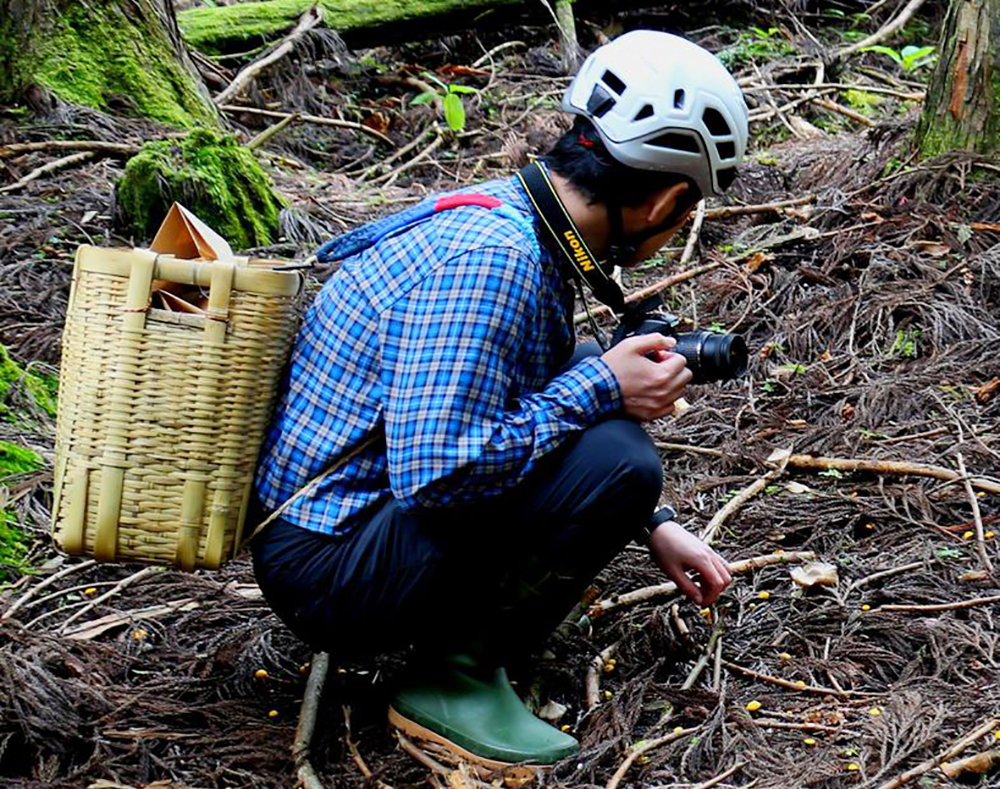 Bamboo basket Dr. Akaishi always carries a bamboo basket on his back when going into the mountains as part of his research. “It’s been a habit ever since I was a student, so it’s almost 20 years now. Mushrooms are very soft and will be squished if placed in a backpack. So, I carry them carefully in a bamboo basket instead. Students say it is not stylish, but people working in the mountains ask me where I got it. It can be a good icebreaker.” |
|---|---|
| This Book | “On the Inside: 401 Days of Fieldwork in Buduburam Camp in Ghana” by Naohiko Omata. Issues affecting refugees in Africa are described through the experiences of the author, who lived in a refugee camp during a survey. “I was drawn to the detailed stories of people’s lives. It was also interesting because the author’s research method was similar to mine.” |
Daisuke Akaishi
Program-specific Assistant Professor, Field Science Education and Research Center, Kyoto University. Born in Gunma in 1978. After completing the doctoral program at the Graduate School of Natural Science and Technology, Kanazawa University (Doctor in Science), Dr. Akaishi worked as a researcher at Kanazawa University, Noto Peninsula Oraccha no Satoyama-Satoumi (NPO) and Suzu City Nature Symbiosis Office. He has had extensive work experience, well beyond the normal framework of a researcher, such as the planning of region-academic cooperation projects, the establishment and operation of NPOs, and the planning of satoyama conservation projects in collaboration with various other actors. Dr. Akaishi worked at Kinki Environment Partnership Office of the Ministry of the Environment and the Educational and Research Unit for Studies on the Connectivity of Hills, Humans and Oceans (CoHHO) of Kyoto University (as a program-specific assistant professor), and has been serving in his current position since 2020.
Interview and original article by Atsumi Takebayashi (team Pascal)
*The interview was conducted online.
Photos provided by Dr. Akaishi
#01 Dr. Rie UmetsuObserving Half-Metal Electrons as the Key to Device Innovations ─ Fundamental Power of Basic Research to Bridge Theory and Application ─
Dr. Hiroshi NishiuraMathematical Modelling to Analyze COVID-19 Pandemic and the Fight Against Infectious Diseases on the Frontline
─ Ambitions to Model Infectious Disease Spread Accounting for Behavioral Changes as a Mathematical Function ─
